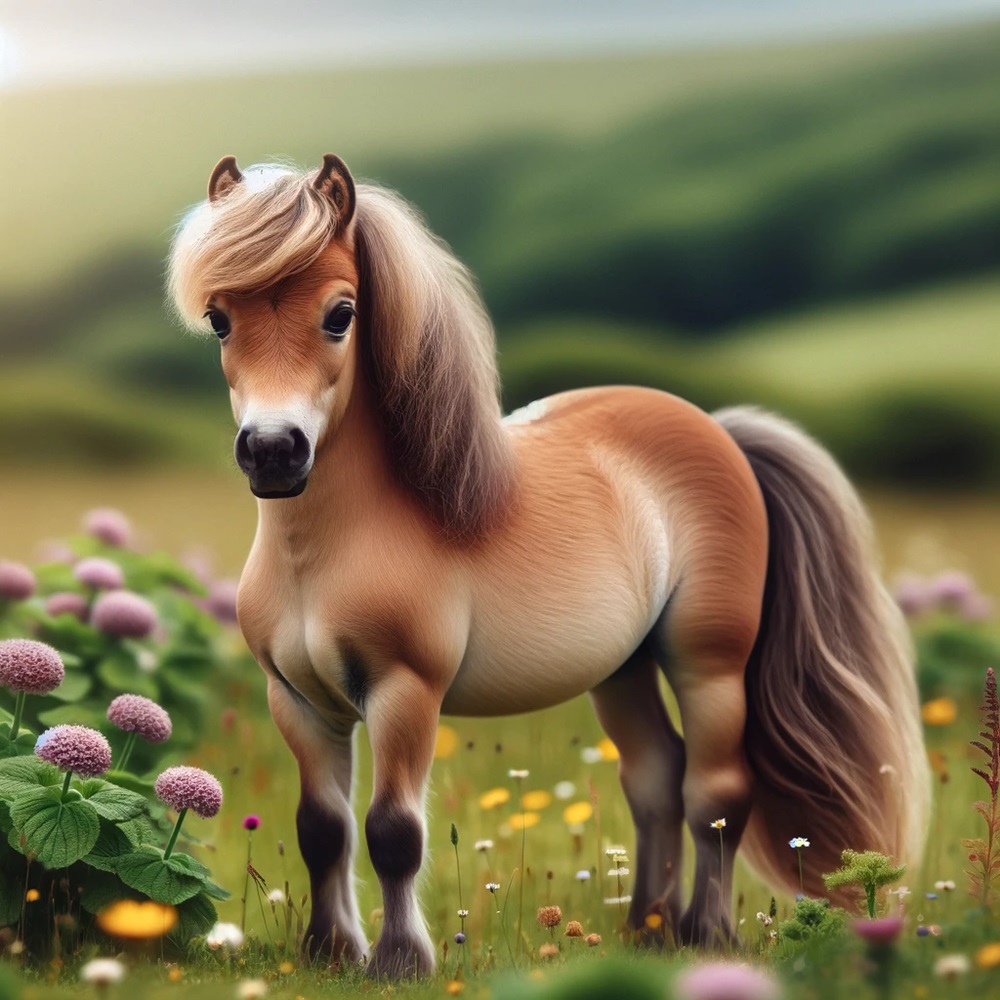Welcome to the Pet Breed Hub, your go-to place for all things pet! Today, we’re galloping into the world of miniature horses, the pint-sized equines that are capturing hearts worldwide.
Introduction
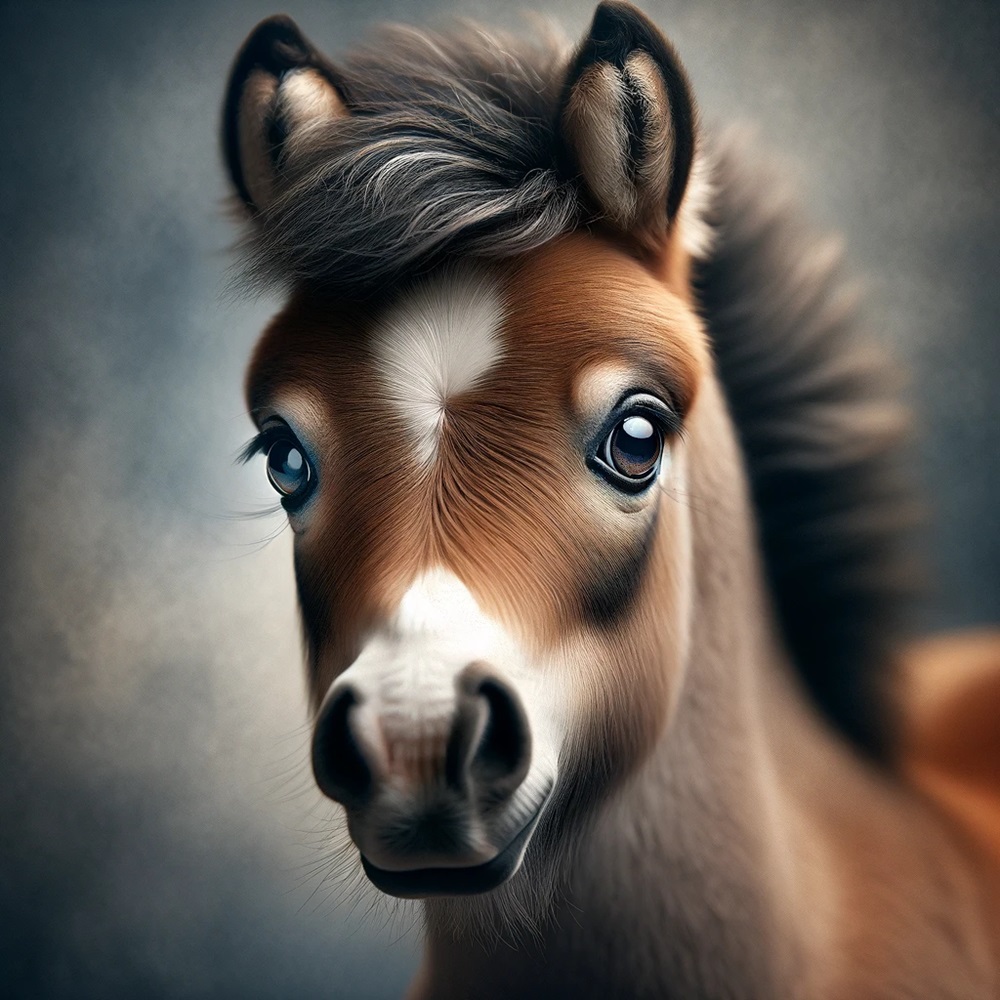
Miniature Horses: Not merely ponies, but a breed that encapsulates the essence of the horse in a compact, adorable package. Often standing no taller than 34 inches, these little wonders are more than just scaled-down horses. They embody the grace, strength, and spirit of their larger counterparts, with a twist of unique charm and an endearing, approachable size.
Imagine a horse that can gaze into your kitchen window or be led down a city street, turning heads and sparking smiles. Miniature horses break the mold of traditional equine expectations, bringing the majesty of a horse to a manageable size, even in less spacious environments.
Characteristics
- The Scientific Name: Equus ferus caballus
- Size: Under 34 inches
- Temperament: Friendly, curious, and intelligent
- Lifespan: Around 25–35 years
- Colors: A variety of colors and patterns
The Enchanting Past of Miniature Horses
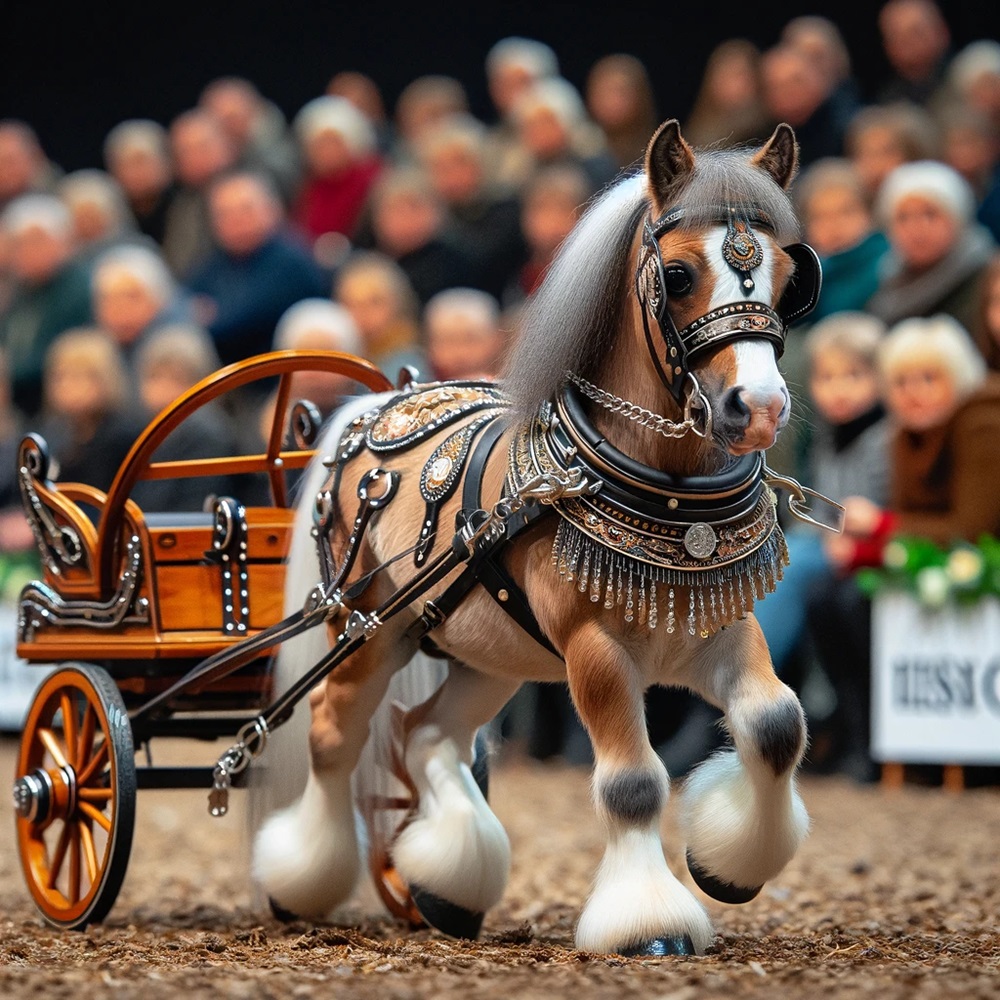
Origins: A Royal Beginning
Royal Companions: miniature horses first pranced into history as prized possessions of European nobility. Dating back to the 1600s, these diminutive horses were luxury pets, often found in the royal courts and aristocratic households.
A Symbol of Status: Owning a miniature horse was more than just having a pet; it was a status symbol, a display of wealth and prestige.
The Working Mini: More Than Just Beauty
Pit Ponies: Beyond their role as noble companions, these little horses served practical purposes too. In the 19th century, they worked in the coal mines of England and Europe, known as “pit ponies.” Their small size allowed them to navigate narrow mine shafts where larger horses couldn’t fit.
From Labor to Leisure: With the advent of industrialization and the decline of their role in mines, miniature horses gradually transitioned from working animals to pets and show animals.
Crossing the Atlantic: The American Story
New World, New Beginnings: The Miniature Horse journeyed to America in the early 20th century, finding a new role and renewed interest.
Breed Development: In America, breeders began to selectively breed these horses, focusing on refining their size and characteristics, leading to the miniature horses we know today.
The Modern Miniature Horse: A Breed in its Own Right
Official Recognition: By the mid-20th century, the miniature horse gained recognition as a distinct breed. Breed registries were established, setting standards for size and conformation.
Versatile and Beloved: Today, miniature horses are cherished not just for their compact size but for their versatility, serving as companions, therapy animals, and competitors in miniature horse shows.
Size and Appearance: The Miniature Horse Up Close

Compact Charm: The Defining Size
Petite Proportions: The hallmark of the miniature is, undoubtedly, its size. These delightful equines stand no taller than 34 inches at the withers (the highest point of the back at the base of the neck).
A Horse in Miniature: Despite their small size, they maintain the proportions and characteristics of a full-sized horse, differing from ponies who have distinct body structures.
A Spectrum of Colors
Diverse Palette: Miniatures come in a wide array of colors and patterns. From the classic solid colors like bay, black, and chestnut to more exotic patterns like pinto, appaloosa, and palomino, they are a true showcase of equine beauty.
Coat Variations: Their coats can vary in texture and length, adapting to different climates and conditions.
The Mane and Tail: Equine Elegance
Flowing Manes and Tails: One of the most striking features of the Miniature Horse is its luxurious mane and tail, which can be kept long and flowing, adding to their elegant appearance.
Styling and Grooming: Owners often take great pride in grooming and styling these features, making them stand out in shows and parades.
Expressive Eyes and Ears: Windows to Their Soul
Bright and Alert Eyes: Their eyes are large and expressive and show a keen intelligence and curiosity about the world around them.
Perky Ears: The ears of a miniature are small and well-shaped, always alert and responsive, adding to their attentive and lively demeanor.
The Vibrant Personality
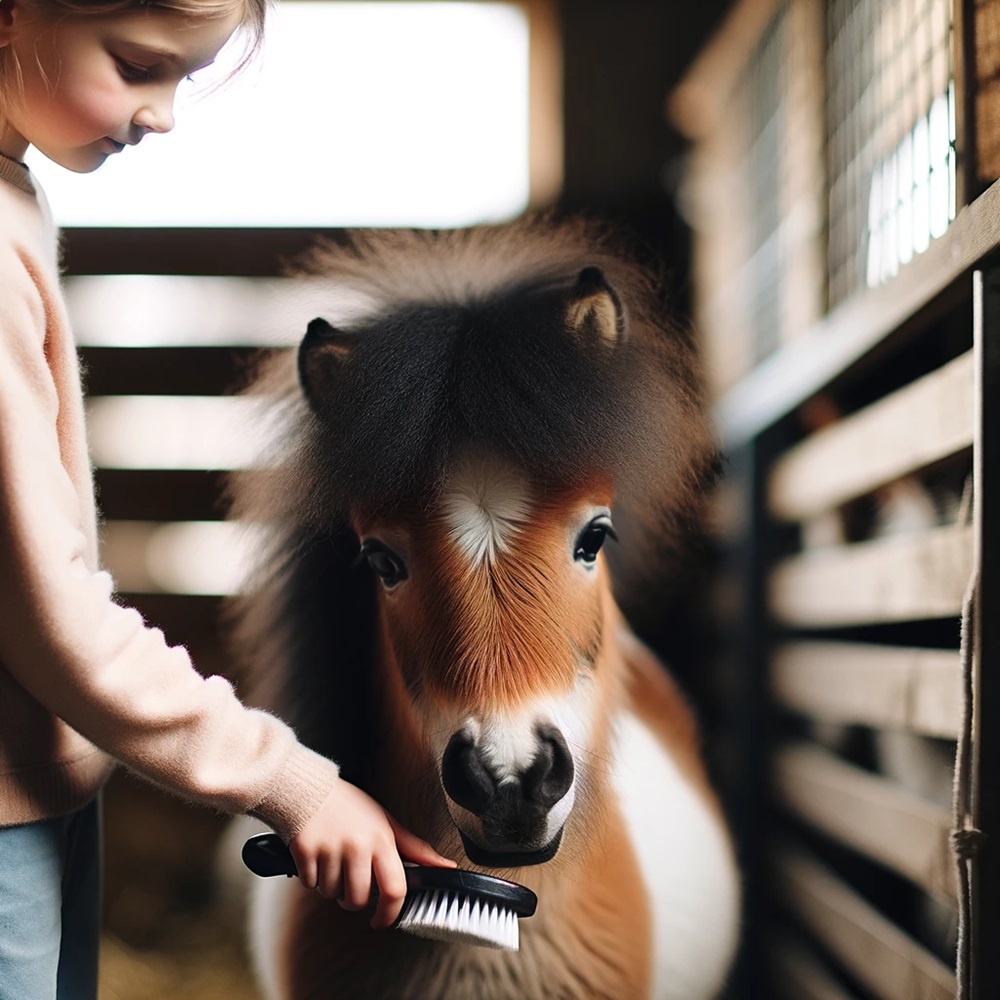
Friendly and Sociable
Companionable Nature: Miniature horses are renowned for their friendly and sociable demeanor. They forge strong bonds with their human caregivers, displaying affection and a desire for interaction.
Great with Kids: Their gentle nature makes them excellent companions for children, offering a safe and enjoyable introduction to horse care and handling.
Intelligent and Trainable
Sharp Minds: Don’t let their size fool you; miniatures are incredibly intelligent. They’re quick learners, able to pick up on training cues and routines with ease.
Versatile Learners: This intelligence makes them adaptable to a variety of roles, from participating in shows and competitions to serving as therapy animals.
Curious and Engaging
Inquisitive Spirits: Miniatures possess a natural curiosity about the world around them. This trait makes them engaging pets, as they’re always keen to explore and interact with their environment.
Eager Participants: Their curiosity also means they’re often eager to participate in activities with their owners, from gentle walks to playful interactions.
Even-Tempered and Calm
Steady Companions: Despite their lively nature, miniatures generally have a calm and even-tempered disposition. They’re known for their ability to remain composed in various situations, making them suitable for both busy family settings and therapeutic environments.
Responsive yet Gentle: Their responsiveness to human emotions, combined with their gentle approach, makes them ideal for interacting with individuals of all ages and abilities.
FAQs
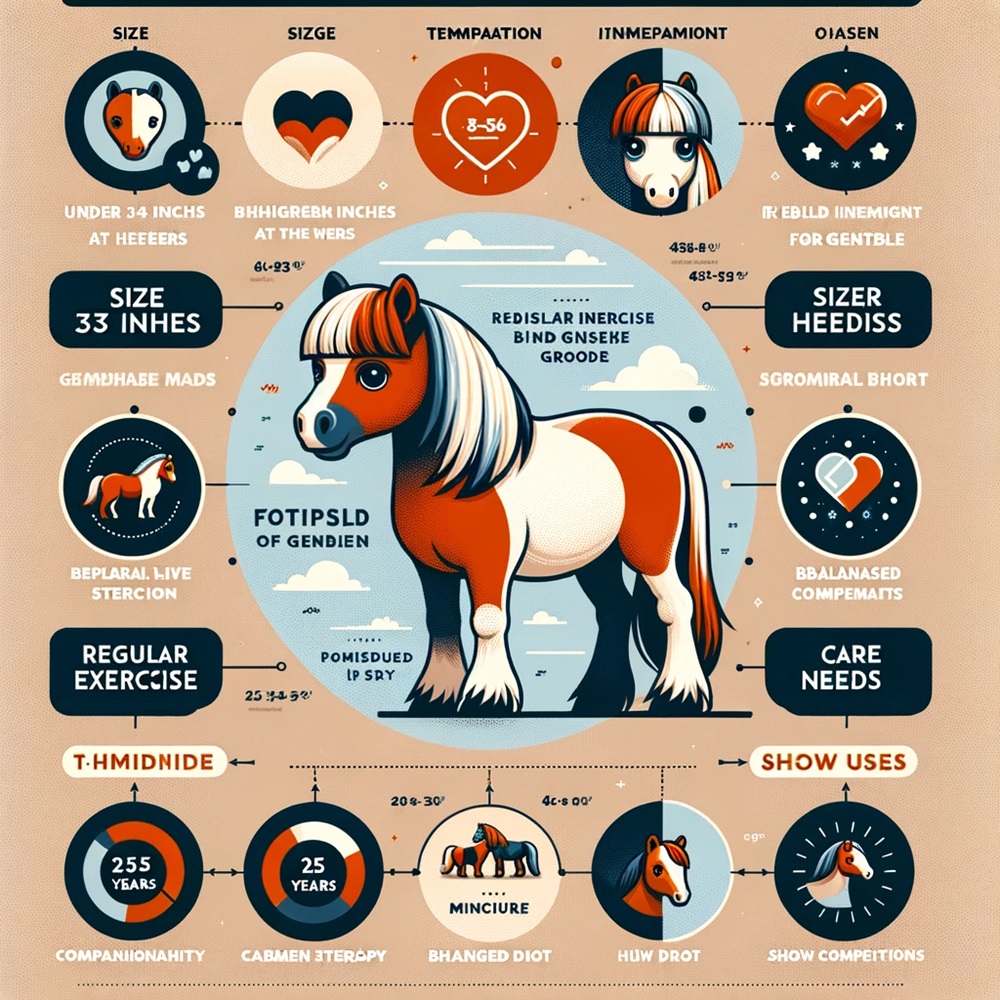
1: What is the maximum height for a Miniature Horse?
Miniature horses must not exceed 34 inches in height at the withers.
2: Can Miniature Horses be kept indoors?
While they are small, they are not suited for indoor living. They require outdoor space to roam and exercise.
3: Are Miniature Horses good with children?
Yes, they are known for their gentle nature and are generally great with kids when properly supervised.
4: How long do Miniature Horses live?
They typically live for 25–35 years, sometimes longer with excellent care.
5: What do Miniature Horses eat?
Their diet should consist of quality hay, grass, grains, and minerals, similar to those of full-sized horses but in smaller quantities.
6: Can you ride a Miniature Horse?
They are too small to be ridden by adults, but they can be ridden by very small children under close supervision.
7: Are Miniature Horses easy to train?
Yes, they are intelligent and can be trained for various activities, including driving, obstacle courses, and as therapy animals.
8: Do Miniature Horses need a lot of grooming?
Regular grooming is important to maintain their coat, mane, and tail and to monitor their overall health.
9: Can Miniature Horses live alone?
They are herd animals and thrive best with companions, either another mini horse or a different animal.
10: Are Miniature Horses expensive to maintain?
While generally less expensive than full-sized horses, the cost can vary based on their needs, healthcare, and the standard of living provided.
Conclusion
Miniatures are more than just adorable; they’re full-fledged members of the equine family with specific needs and incredible abilities. Whether for companionship, therapy or just the joy of having a tiny horse, they bring a unique and delightful presence to any home.
References and External Links
American Miniature Horse Association (AMHA)
Website: AMHA – American Miniature Horse Association
International Miniature Horse and Pony Society (IMHPS)
Website: IMHPS

